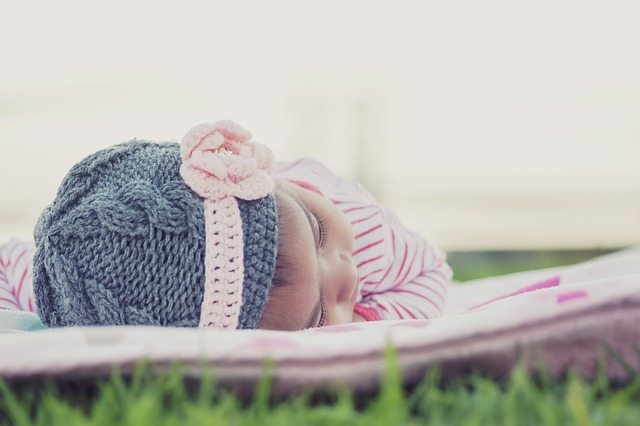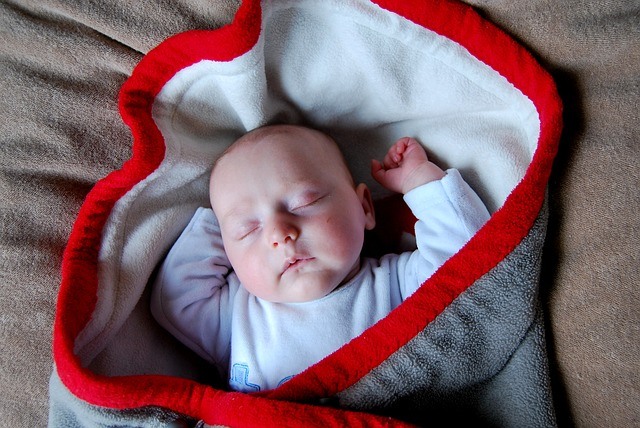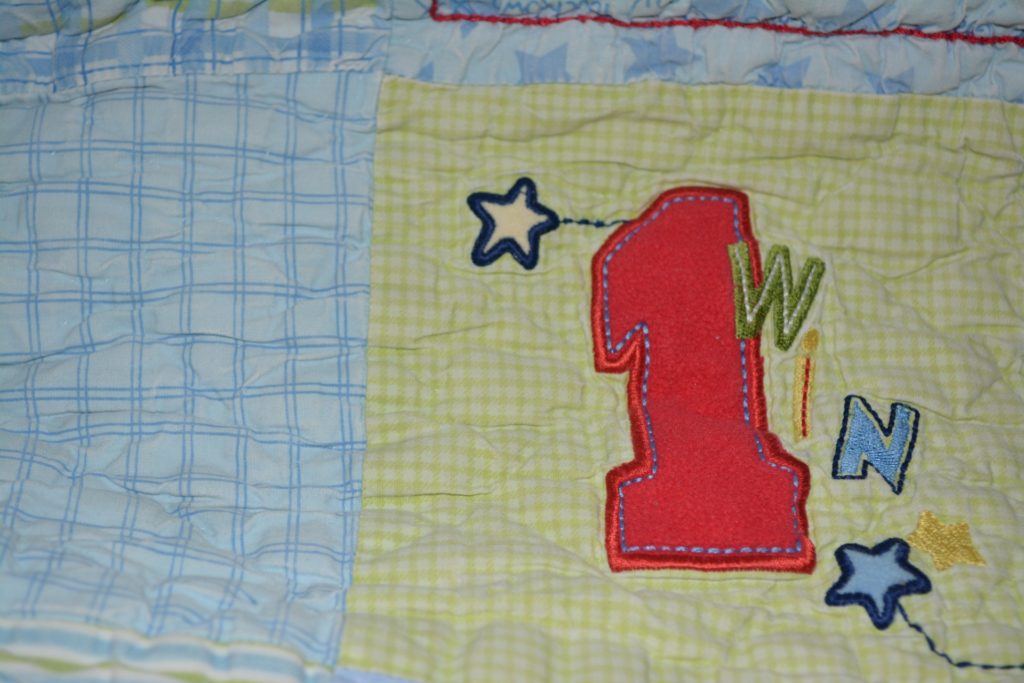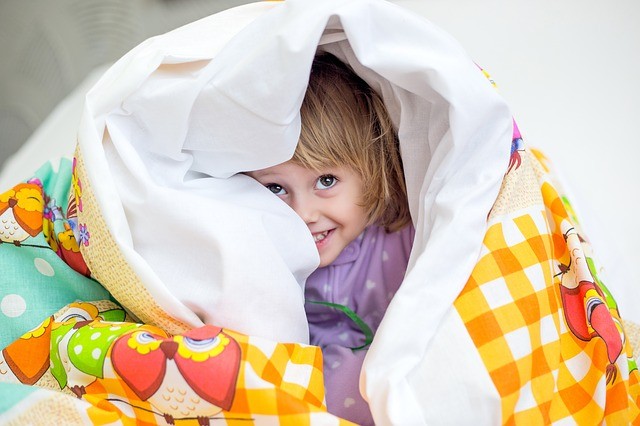As a parent, you know the magic of baby blankets. They keep your baby clean, calm, and comfortable.
Of course, not all blankets are created equal. Some are too scratchy, others too heavy. When it comes to your baby, you’ll want nothing but the best.

So why not make a blanket custom-tailored just for them?
Why Make a Baby Quilt?
Customizable and Easy to Make
Quilts are the perfect baby blankets. They’re soft, with just the right amount of layers to keep your kiddo warm and happy. Because they’re quilts, you can make them as colorful as you please.
Quilts are also simple to make. In fact, blankets are a great way for new quilters to learn the basics, and the size entailed in a baby-version makes it all the easier.
Comforting and Functional
Baby quilts a great asset when you’re traveling, just in case you need a blanket or a soft mat for your baby to sit on. It’s ideal for places where it’s not entirely sanitary, like parks and gardens.
Even in areas where you could get a blanket, like at a friend’s house, it’s always wise to have something familiar for your baby to sleep with.
Baby quilts can even be used as mementos, something that your child can look back on fondly when they have outgrown them.
But what goes into making a baby quilt? In this article, we’ll discuss all you need to know—from choosing the size to the different ways to assemble your quilt.
Baby Quilt Sizing Guide
Before you start making your baby quilt, you should first determine the type and design you’re after. Each kind is essentially the same in construction, but their sizes vary to accommodate their function.
There are three types of baby quilts: the receiving blanket, the baby blanket, and the crib blanket.

Receiving Blanket
This will be the blanket that parents wrap their newborn child in to bring them home from the hospital.
This type of blanket is the smallest, and its dimensions will vary depending on whether or not your baby is born prematurely.
The average receiving blanket size is around 28 by 34 inches. Square blanket dimensions are around 30 inches on all sides.
For premature babies, receiving blankets should be about 18 by 20 inches. For a square blanket, dimensions are usually around 24 inches on all sides.
Baby Blanket
Average dimensions for baby blankets are 34 by 46 inches.
Of course, babies vary in size. Larger babies will need larger blankets, and so forth. It’s always a good idea to ensure that your kiddo will comfortably fit in the blanket.
Crib Quilt
For those who want to make quilts that are specifically designed for cribs, it’s best to measure the crib before starting your project.
Cribs will have their own dimensions, so be sure to measure both the width and length. Of course, add about five inches of leeway on all sides, so you can tuck in the quilt at the edges for security.
If you want your crib quilt to double as a blanket, add more to the length. Common baby quilt sizes are 36 by 52 inches.
Resizing Quilts
What happens when your baby outgrows their quilt? There are many things you can do with a quilt that is too small.
Of course, you can always just keep it as a souvenir; your child may be attached to their blanket since they’ve used it for so long.

Alternatively, you can add more fabric to the quilt. If you’ve chosen a quilting method that uses scraps of fabric attached to each other, you can simply remove the quilt’s backing and add more pieces.
Remember, square blocks or strips of fabric will be easier to add onto, so fancy round- or star-shaped designs may be unwise.
Choosing the Right Fabric
Fabric is crucial to baby quilts, as the wrong choice will irritate a baby’s sensitive skin. It’s wise to stick with 100% cotton. This will ensure that your quilt is hypoallergenic, even for the most delicate baby.
As a plus, cotton is very breathable, ensuring your baby won’t be overheated. Finally, it’s safe to throw in the washing machine.
See more on quilting cotton here.
As an alternative, flannel is a great material, as most babies love the secure but soft texture.
When it comes to cleaning, it’s best to steer away from fabrics and fabric colors that are easily stained. Pale blues, pinks, and whites are lovely baby colors, but remember that babies are notoriously messy.
Keep in mind that your fabrics should also be machine-washable, so fresh colors that may bleed are a no-no.
How to Make a Baby Quilt
This baby quilt design is a great beginner’s project for those who are new to quilting.
Since it doesn’t require stitching scraps of fabric together, the time required to tackle it is significantly lessened.
Materials
- 1 1/4 yards of printed decorative quilt fabric.
- Rotary cutter and cutting mat.
- Quilt batting.
- 1 1/4 yards of woven flannel.
- Pins.
- Masking tape.
- 1 yard of binding fabric.
- Sewing machine.

Method
- Determine the size of your finished quilt. Then, add an inch and a half to all sides. This will be the size of your decorative fabric.
- From the measurement of your finished quilt, add 2 1/5 inches to all sides. This will be the measurement of your quilt batting and woven flannel; these two fabrics should be slightly larger than your decorative fabric.
- Place the quilt batting on top of your woven flannel. Then, place your decorative fabric right-side-up on top of the quilt batting. Try to center each layer, so that the extra fabric is even on all sides.
- Pin the sides of the quilt into place. Alternatively, you can do a loose running stitch along the edges to baste the layers together.
- Now it’s time to stitch! This pattern will begin from the center of your fabric, going diagonally across two opposite corners. For the purposes of this guide, we’re going to start with the top-left corner of your quilt. In future projects, you could start with any corner. Take your masking tape, and line the upper edge of your tape to the upper left corner. Then, with your tape, connect this edge to the bottom-right corner. Make sure that the upper edge of your tape is flush against this corner. Trim off the rest of the tape.
- Now, stitch a diagonal line starting from the top left corner. Use the tape as a guide, stitching against the top edge of the tape. Begin and end your stitches just beyond your decorative quilt fabric, so that you have a few stitches that only include the batting and flannel.
- Now, remove your tape, but don’t discard it. Line its ‘bottom edge’ against the stitch you just made. It should be slightly longer than your quilt; trim the excess.
- Using this new guide, stitch your fabric the same way you did the previous stitch.
- Now, remove the tape. Line its ‘top edge’ against the first stitch you made. The tape should be the same length as the previous stitch; you shouldn’t need to trim your tape. Make your third stitch using this guide.
- Now, take your tape, and move it against the third stitch you made. Trim the excess tape, and stitch against this guide. Then, remove your tape again and move it against your fifth stitch. Stitch along this new guide.
- This will be the pattern for the rest of the stitches. You will be moving your tape from one half of the quilt to the other half, trimming your tape every other stitch. Do this until you reach the corners.
- At this point, you will need to trim off extra batting and flannel.
- Now, we can begin the binding! Cut 3-¾-inch strips of fabric. Sew them end to end so that you have one long strip. Make sure that it is at least 5 yards long. Iron the strip so that it is halved lengthwise. Pin the raw edges of your binding to the flannel side of your quilt.
- Sew the back of the binding with a blanket stitch around the entire edge. Leave a ½-inch seam and miter the edges. Now, flip the binding over the raw edge of the quilt. Sew the folded edge to the front of the quilt with a decorative stitch.
This video shows another example of how to make a baby quilt.
Baby Quilt With Different Fabrics
Of course, what’s quilting without different scraps of fabric? If you want a design that lets you use different colors and patterns, this is the ideal project for you!
Gather up your stray fabric or assemble your newly-bought quilt squares – and let’s dive in!
Materials
- Scrap fabric pieces.
- 1 yard of soft fabric for the backing.
- Embroidery cloth and a quilting needle.
Method
- Prepare your scrap fabric. Each scrap should be a 5×5-inch square. The number of squares you need will depend on the size of your quilt.
- After you have about 40 squares, you can begin laying out the pieces on your workspace. By arranging them individually, you can visualize your finished pattern. Move squares around if their colors begin to clash or if you have a spot with too many busy patterns.
- Try to arrange your pieces so that the length of your quilt is one square longer than its width. No matter the size of your quilt, this ratio will keep your pattern a symmetrical, rectangle shape.
- After you have finalized the design of your quilt, it’s time to stitch the rows together. Take your first two squares. Line them up so that the right sides are facing each other. Now, take the edges where the two squares touch, and sew along this edge with a ¼-inch seam.
- Open up the two fabrics and press your finger along the stitched edge. This method is called the finger press, and we’re going to use it to attach the rest of the squares! You should begin with every two squares until you’ve completed a row.
- When you have completed all your rows, it’s time to attach them. First, press the seams of each stitched square, so that they lie flat and smooth. Then, press the seams of the edge to prepare them for stitching.
- Next, line up the seams of one row against the other. Pin them, adjusting the pins as you go to keep the seams aligned. Stitch the rows to each other with a ¼-inch seam.
- Now, it’s time to attach the backing. Take the fabric that you have for your backing and put it on top of your quilted fabric, right sides facing each other.
- Now sew the fabric to the quilt, leaving an opening of about four inches on one side.
- Turn the fabric inside out. Then, top stitch around the fabric again, so that you close the gap you left before.
- Now, thread a quilting needle with embroidery thread. Go through one corner from the top, and go back up again from the bottom. Now, make a square knot with this excess thread. Do this on every other corner, along the width and length of the quilt. Make sure that your knots are secure, and trim the excess fabric. This embroidery thread makes your quilt sturdier, and it’s gorgeous too!
Other Baby Quilt Patterns
Of course, these patterns aren’t the only baby quilts available. If you feel ready for more complicated designs or patterns, then check out this list of free baby quilt patterns from the Spruce Crafts.
These patterns vary in design, materials, and functions. Whether you’re looking for baby girl quilts or baby boy quilt patterns, you’re bound to find something you like!
This video shows another baby quilt pattern you can try.
Baby quilts are great quilting projects for both beginners and experts. They make wonderfully intimate gifts for your child or an expecting parent.
Hopefully, this article has helped you create a quilt that can be loved for many years to come.
What are your favorite baby quilt patterns?
